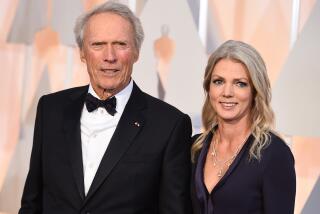The Case for a Small Film on the Big Screen : Movies: Despite Hollywood’s tilt toward the titanic, there is plenty of evidence that the intimate film can succeed at the box office.
Film critics, bless their occasionally misguided hearts, have had a way of dismissing some intimate dramas as being merely television fare, better suited to the small screen, not substantial enough for the big time. It’s the ultimate put-down.
It’s true that when television began gnawing at the vitals of the motion-picture audience, Hollywood responded by trying to outsize and out-spectacle the new medium. Colossal, majestic, magnificent and cast of thousands took on new significance. The wide screen is a now-permanent consequence of the film-TV competition, and the inappropriateness of the wide format to the television screen can be read, not least, as a thumb to the nose.
The television screen, even at its largest, is indubitably fine for the intimate drama--indoor confrontations to be watched indoors. But the psychological impact of watching something on the motion-picture screen is not and never will be the same as looking at television. The difference is the movies’ first and last line of defense against total surrender to television and the VCR.
The trancelike, dreamlike state in which a motion picture is experienced (when, in the scary parts, you have to comfort yourself that it’s only a movie) is an enduring form of magic that works on material of any size. The claustrophobic intensity of “Who’s Afraid of Virginia Woolf?” is as engrossing, as transporting, as a stampede in “Red River.”
The sadness is that the small film (and surely someone has remarked that there are no small films, only small ideas) has been endangered by the rush to gigantism on the giant screen. The further sadness is that there is plenty of evidence that the intimate film can work wonderfully well at the box office. The movies proceed by depth as well as width, and it is a truth the decision makers ignore at some cost.
From “Annie Hall” to “Driving Miss Daisy,” to cite only some relatively recent examples, movies that rarely get beyond two-shots and prefer close-ups of people talking and relating have been solid successes.
Among the films I have most enjoyed this year is Whit Stillman’s “Metropolitan.” It was made for significantly less than a half-million dollars and it consists largely although not entirely of people talking in rooms. Like John Sayles’ “The Return of the Secaucus Seven,” which it resembles in its basic creative and autobiographical impulses, it has a refreshingly unknown cast whose members seem not so much to have been scripted as to have been observed unaware.
Although its milieu, the rich and rarefied world of Manhattan debs and preppies, would seem to be of limited interest and susceptible of even more limited sympathy, Stillman manages to make his young people emblematic of the larger society and more universal concerns about belonging or not belonging, and much else. The question of what to do with your life is examined in a way that reminded me of “The Graduate.”
“Plastics!” the party guest cried to Dustin Hoffman, a perfect symbol of everything that terrified the newly graduated Hoffman about the awaiting world. There is nothing so overtly farcical in “Metropolitan,” but there is same sense of an analytical intelligence looking at these young people in a detached, gently or not so gently satirical way, at once impatient but comprehending.
The casualties of what you might call the behemoth mentality in studio decision-making include just such films of autobiographical impulse and the films that hope to be about something, preferably about those things that touch individual lives.
Smallness as such is not a virtue, but films of any size which fail to offer intimacy--the possibility of identification with the principal characters--are always at high risk. It seemed significant earlier this week that General Cinema, one of the largest chains in the country, reported sharply reduced earnings, partly, it said, because of the disappointing performance of what were to be big winners this summer.
Hollywood, in which no cycle lasts for long, looks to have a more character-filled lineup for fall, including “Avalon,” the latest of Barry Levinson’s evocations of his life in Baltimore that began with “Diner.”
The shrinkage in the number of films made since the dawn of television has dangerously reduced the variety of films made. The tyranny of the big budget needs more serious challenge, to make room for intimacy and for the variety which has not been overruled yet as the spice of life.
More to Read
Only good movies
Get the Indie Focus newsletter, Mark Olsen's weekly guide to the world of cinema.
You may occasionally receive promotional content from the Los Angeles Times.






